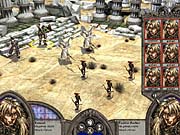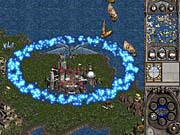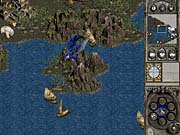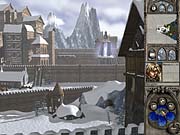Disciples II: Dark Prophecy Designer Diary #6
Producer Pro Sotos returns with an entry that describes the mood of the Strategy First offices before E3.
Entry #6 - 05/07/01
By Pro Sotos
Producer, Strategy First

Anyone with an interest in the games industry knows what E3 is (except for that kid's father who told me he'd look for me next year at E4). Every year at around this time, game developers from around the world gather to show industry and media people their wares. While E3 is an event that celebrates the game industry, for those of us who have to prepare for it, it's not all fun and games. E3 is a three-day event that happens in May, but to be ready, you have to start planning for it months in advance.

Obviously, the show attendees are not there to meet the game developers themselves; they want to see what we are working on. What they are looking for are the games that will keep them up all night, the ones that will make them show up late when they've made plans with their friends. They hope that the next game they see is the one that will take over their lives completely. And our hope is that when they come to visit us at E3, they will leave our booth saying, "I can't wait to play that game." To get that reaction, we try to show as many features from the game as possible. For Disciples II, this involves a lot of coordination between the graphics and programming teams.
For the programmers working on Disciples II, this year's E3 is not the usual nightmare. Ordinarily, the programming team is the hardest hit, and there are many nights where four hours of sleep is a hell of a lot of rest, but this year, history is not repeating itself. Even though Disciples II's programming team is smaller than that of Disciples: Sacred Lands, Disciple II's team has managed to implement every major feature the design team asked for, and it has even found time to put in the features that fall into "that would be nice to have, but really, it isn't necessary" category. One of these features is alpha blending. It wasn't included in Disciples: Sacred Lands and was something that the entire art department was clamoring for. Since the programmers were way ahead of schedule, they found a quick and effective way to implement alpha and other related features into the game. Alpha blending is used to show transparency in objects. When the alpha value is set to 100 percent, it is opaque, and you can't see through the object; when the alpha value is set to 0 percent, the object is completely invisible, and you can see everything but the object. When alpha is set to 50 percent, the object is semitransparent, so this means that you can see the object and can also see what's under it. The major use of alpha blending in Disciples II is for spell effects. Alpha blending wasn't in Disciples: Sacred Lands, and when spells were cast on an object, the object was covered by the spell. By introducing alpha into the game, the artists now have the ability to make the kinds of effects that will make gamers stop and reload the game to see the spell again.

While one man's fortune may be another man's misery, this year's nightmare award for development on Disciples II will go to the art department. While alpha blending was a feature they used to tease the programmers about, the artists now have a lot of work to do if they want the graphics to take full advantage of it. Because alpha blending was implemented just a few short months ago (when the art team started to work on Disciples II), there were absolutely no plans to introduce alpha into it. The reason is that alpha, along with the higher-resolution graphics, would have serious effects on the game's frame rate. This wouldn't be a problem on higher-end computers, but it would be on the older gaming systems. But since the programmers were able to implement alpha without having the frame rate suffer, the art department has a lot of assets that need to be reworked.

The biggest challenge surrounding E3 is that to get a playable version of the game ready, the programmers and artists have to work on small sections of code and art; and before they've finished each section, they have to start working on something else that's completely unrelated. For example, when you start animating unit attacks or drawing unit portraits, since each race has a unique identity, it's much easier to maintain a uniform style--and to do this, it is preferable to work and finish one race at a time before you start on the next one. But to have something to show at E3, you have to start working on one thing, and when you've done enough of it to show, you begin working on something else. Then when you return to finish what you've started, the new stuff doesn't look like the older stuff. Maybe it looks better or worse, but it doesn't look the same--so instead of having a fantasy world that looks real, you have a game that looks like it was put together by different people who don't have any idea of what the other is working on. Sounds complicated, right?
Since Disciples II is very heavy on graphics, gamers would not get an accurate feeling of what the final game will be like if we finished one race at a time. This would leave us with a game that is both stunning and, well...ugly. And we don't want that! So we're doing everything we can to have a build that we are proud of. When we show our game to the world at E3, the world will definitely see a polished-looking Disciples! Curious? Looking forward to it? Well, you'll just have to wait until the first day of the infamous E3!
Got a news tip or want to contact us directly? Email news@gamespot.com
Join the conversation